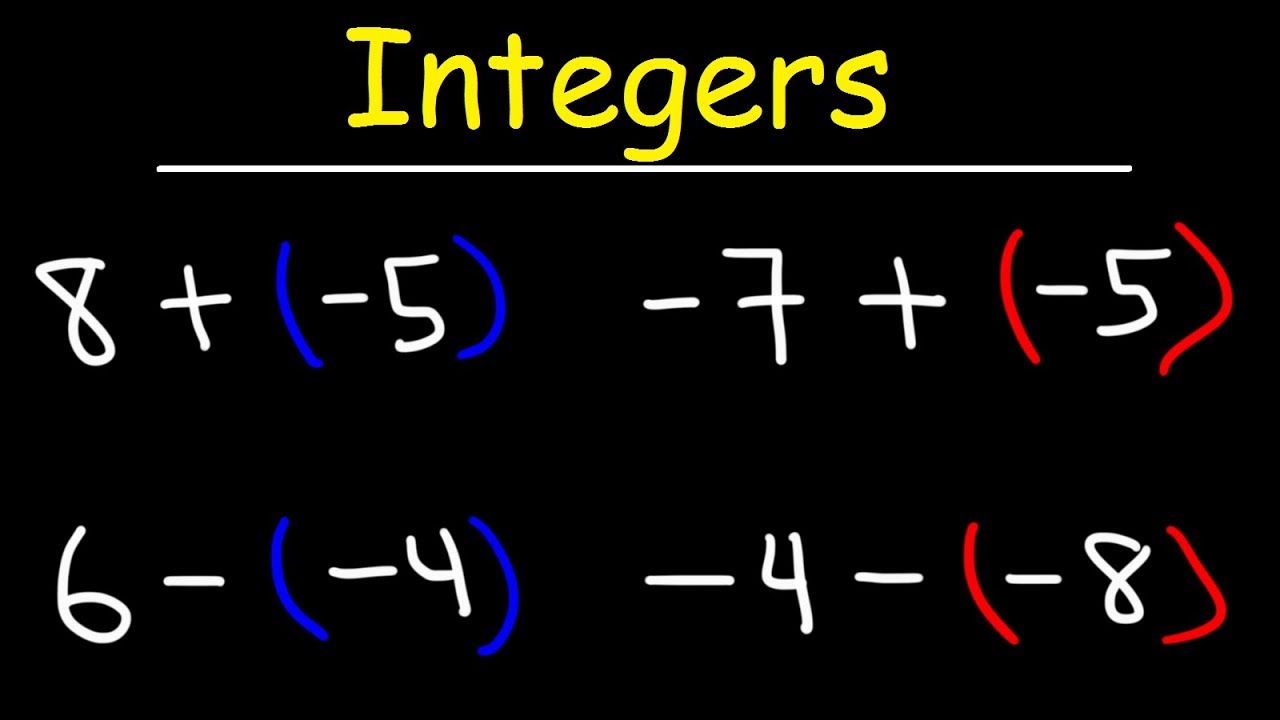
Integers are everywhere in our daily lives, from counting apples to measuring temperature. But what makes these whole numbers so special? Integers include positive numbers, negative numbers, and zero, forming the backbone of basic arithmetic. They help us understand concepts like debt, elevation, and even time zones. Ever wondered why negative numbers exist or how zero was invented? These questions lead to fascinating stories and facts about integers. Whether you're a math enthusiast or just curious, diving into the world of integers can be both fun and enlightening. Let's explore some of the most interesting facts about these essential numbers!
Key Takeaways:
- Integers are whole numbers that can be positive, negative, or zero, and they have fascinating historical, mathematical, and real-life applications. They are essential in understanding more complex math concepts.
- Integers play a crucial role in technology, with applications in computer programming, cryptography, digital clocks, and data storage. They also exhibit interesting patterns, such as even and odd numbers, arithmetic and geometric sequences, and Pascal's Triangle.
What Are Integers?
Integers are whole numbers that can be positive, negative, or zero. They don't include fractions or decimals. Understanding integers is crucial for grasping more complex math concepts.
-
Integers include zero. Zero is considered an integer and plays a unique role as the neutral element in addition.
-
Positive and negative integers. Positive integers are greater than zero, while negative integers are less than zero.
-
No fractions or decimals. Integers are whole numbers, meaning they don't have fractional or decimal parts.
-
Infinite in both directions. Integers extend infinitely in both the positive and negative directions.
Historical Facts About Integers
The concept of integers has been around for centuries. Let's explore some historical tidbits.
-
Ancient civilizations used integers. Egyptians and Babylonians used integers for trade and astronomy.
-
Negative numbers were controversial. Negative integers were not widely accepted until the 17th century.
-
Brahmagupta's contribution. The Indian mathematician Brahmagupta introduced rules for arithmetic involving zero and negative numbers in the 7th century.
-
European acceptance. Negative integers gained acceptance in Europe during the Renaissance.
Mathematical Properties of Integers
Integers have unique properties that make them essential in mathematics. Here are some key properties.
-
Closure property. The sum or product of any two integers is always an integer.
-
Commutative property. The order of addition or multiplication doesn't change the result.
-
Associative property. Grouping of integers in addition or multiplication doesn't affect the outcome.
-
Distributive property. Multiplication distributes over addition for integers.
Integers in Real Life
Integers aren't just for math class. They have practical applications in everyday life.
-
Temperature readings. Thermometers use integers to show temperature changes, including negative values for cold weather.
-
Banking and finance. Bank accounts use integers to represent deposits (positive) and withdrawals (negative).
-
Sports scores. Scores in many sports are represented by integers.
-
Elevation levels. Elevation above or below sea level is measured using positive and negative integers.
Fun Facts About Integers
Integers can be fascinating and fun. Here are some interesting facts.
-
Magic squares. Magic squares are grids where the sums of numbers in each row, column, and diagonal are the same. They often use integers.
-
Perfect numbers. A perfect number is an integer that is the sum of its proper divisors. For example, 28 is a perfect number.
-
Fibonacci sequence. The Fibonacci sequence is a series of integers where each number is the sum of the two preceding ones.
-
Prime numbers. Prime numbers are integers greater than 1 that have no divisors other than 1 and themselves.
Integers in Technology
Technology relies on integers for various functions. Here are some examples.
-
Computer programming. Integers are fundamental in coding and algorithms.
-
Cryptography. Encryption methods often use large integers for security.
-
Digital clocks. Digital clocks display time using integers.
-
Data storage. Memory addresses in computers are represented by integers.
Interesting Patterns with Integers
Patterns involving integers can be intriguing. Let's look at some.
-
Even and odd numbers. Even integers are divisible by 2, while odd integers are not.
-
Arithmetic sequences. An arithmetic sequence is a series of integers with a constant difference between consecutive terms.
-
Geometric sequences. A geometric sequence is a series of integers where each term is a constant multiple of the previous one.
-
Pascal's Triangle. Pascal's Triangle is a triangular array of integers with interesting properties and patterns.
The Magic of Integers
Integers are more than just numbers on a number line. They form the backbone of mathematics, helping us solve problems, understand patterns, and make sense of the world. From simple arithmetic to complex equations, integers play a crucial role in various fields, including science, engineering, and finance.
Understanding integers can boost your problem-solving skills and logical thinking. They’re used in everyday life, from balancing a checkbook to calculating distances. Knowing how to work with positive and negative numbers, zero, and their properties can make math less intimidating and more enjoyable.
So next time you encounter an integer, remember its importance. Whether you’re adding, subtracting, multiplying, or dividing, these numbers are essential tools in your mathematical toolkit. Keep exploring and practicing, and you’ll find that integers are not just useful—they’re fascinating!
Frequently Asked Questions
Was this page helpful?
Our commitment to delivering trustworthy and engaging content is at the heart of what we do. Each fact on our site is contributed by real users like you, bringing a wealth of diverse insights and information. To ensure the highest standards of accuracy and reliability, our dedicated editors meticulously review each submission. This process guarantees that the facts we share are not only fascinating but also credible. Trust in our commitment to quality and authenticity as you explore and learn with us.
